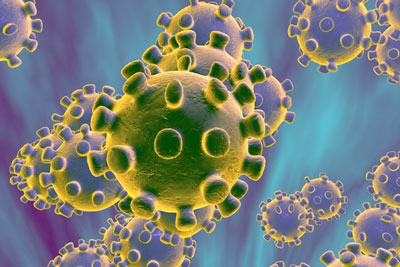Researchers Discover Drug From Oleander Plant To Treat HTLV-I Virus, The Deadly Cousin OF HIV That 15 Million People Worldwide Are Infected With
Source: Thailand Medical News Dec 07, 2019 6 years, 2 weeks, 1 day, 20 hours, 37 minutes ago
Researchers From Southern Methodists University (SMU) have discovered that the drug oleandrin derived from the Nerium oleander plant could prevent the
HTLV-1 virus from spreading by targeting a stage of the reproduction process that is not currently targeted by existing drugs. This is significant discovery because there is currently no cure or treatment for the virus of a lesser-known "cousin" of HIV that affects an estimated 12 to 15 million people worldwide.

Dr Robert Harrod, associate professor and director of Graduate Studies in SMU's Department of Biological Sciences told
Thailand Medical News, "Our research findings suggest that oleandrin could possibly limit the transmission and spread of
HTLV-1 by targeting a unique stage in the retroviral life cycle." Dr Harrod is a co-author of the study, published in the
Journal of Antivirals & Antiretrovirals.
HTLV-1 or the human T-cell leukemia virus type-1, is a retrovirus that infects white blood cells known as T-cells and is usually transmitted in a similar manner to
HIV-1 through a person's blood or body fluid. Infected cells present within breast milk can also pass
HTLV-1 from mother to infant through breastfeeding.
Unlike HIV-1 that kills the infected T-cells, the
HTLV-1 causes them to divide uncontrollably. This in turn can lead to the development of aggressive leukemia a cancer of the white blood cells. People infected with
HTLV-1 can also develop a progressive neurological disease known as
HTLV-1-associated myelopathy/tropical spastic paraparesis (HAM/TSP), a progressive inflammatory disease of the nervous system that can affect one's ability to walk and may cause serious symptoms leading to coma and even death.
The retrovirus particles copy themselves within infected cells by transcribing their RNA into DNA after entering a cell, a process called the retroviral life cycle. The more virus-infected cells that are produced, the worse symptoms can get for people who are infected with
HTLV-1.
Dr Tetiana Bowley and Dr Lacin Yapindi, the two lead authors, are Ph.D graduate students who worked with Dr Harrod in his lab. Aditi Malu, who also worked in Harrod's lab, graduated from SMU with a Ph.D. in May. Together with collaborator Jagan Sastry at the University of Texas M.D. Anderson Cancer Center and Dr. Robert Newman at Phoenix Biotechnology, Inc., SMU researchers found that the botanical compound called oleandrin successfully interrupted part of the infection cycle for
HTLV-1.
Dr Harrod commented, "As has been shown for HIV-1, treatment with oleandrin did not affect the ability of infected cells to produce and release new virus particles. However, the particles that were produced were defective, meaning they contained less envelope glycoprotein on their surface. This impaired their ability to form virological synapses for effective cell-to-cell virus transmission." A so-called "envelope," which forms the outer coat of the
HTLV-1 particle and binds to the receptors o
n the surface of target cells, must be present in order for a virus-infected cell to fuse with the membrane of an uninfected T-cell, allowing the virus to enter the cell and spread the disease. Without it, the
HTLV-1 retrovirus can't successfully be passed to other cells.
Harrod added, "Oleandrin is unique in its ability to block the incorporation of the envelope glycoprotein into mature virus particles as they're exiting an infected cell." The hope is that oleandrin, or a similar drug that targets the same part of the retrovirus infection cycle, could potentially prevent
HTLV-1 from causing progressively worse clinical symptoms in people with an immune-driven condition like HAM/TSP where the body's immune system causes tissue damage due to the misrecognition of replicating virus particles.
Harrod said, "If a drug, such as oleandrin, could prevent the spread of
HTLV-1 particles within an infected HAM/TSP patient, it may become possible to dampen the neuroinflammatory response to alleviate the symptoms of disease."
Dr Harrod called the findings "exciting" because oleandrin targets a different mechanism of fighting the virus one that hasn't been the focus of other antiviral drugs that attack specific steps in the retroviral infection cycle. Those drugs, called highly-active antiretroviral therapies or HAART for short, have not been shown to be effective with
HTLV-1.
During the study, to demonstrate that purified oleandrin or an N. oleander extract could inhibit the formation of
HTLV-1 virological synapses, SMU researchers in Harrod's lab labeled an HTLV-1-infected virus-producing cell-line with green fluorescent protein (GFP), so these cells could be easily identified by their 'green' fluorescence under a microscope. These cells were then placed in the same culture well as healthy T-cells. T-cells that became infected with
HTLV-1 were easy to spot because researchers could see a junction between the two cells and then a red fluorescent signal showing up in the newly-infected T-cell.
Relatively unknown, in recent years, the incidence of
HTLV-1 infections have been increasing mostly through sexual transmissions and drug usage via needles. HTLV-1 is most endemic in southwestern Japan, the Caribbean, South America, and west Africa. In the Americas, the highest prevalence of HTLV-1 is found in Haiti, Jamaica, Dominican Republic, northeastern Brazil, and Peru with more cases now emerging in Thailand, Australia, Britain and US.
Reference : Tetiana Hutchison et al. The Botanical Glycoside Oleandrin Inhibits Human T-cell Leukemia Virus Type-1 Infectivity and Env-Dependent Virological Synapse Formation, Journal of Antivirals & Antiretrovirals (2019). DOI: 10.35248/1948-5964.19.11.184
